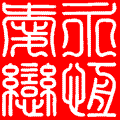| 图片: | |
|---|---|
| 名称: | |
| 描述: | |
- 血管免疫母T细胞淋巴瘤
-
chenliu0552 离线
- 帖子:502
- 粉蓝豆:22
- 经验:985
- 注册时间:2010-12-10
- 加关注 | 发消息
-
本帖最后由 chenliu0552 于 2011-11-13 07:37:53 编辑
感谢Dr. fawn28提出很好的问题供大家学习和思考,这个问题其实对理解AILT 极其鉴别诊断有比较重要的作用。2002年国际顶尖的血液病杂志“Blood”的一篇英国的研究小组的论文对这个问题进行了系统、深刻的阐述,后来此文也成为编写WHO第四版AILT相关内容的参考文献:
Neoplastic T cells in angioimmunoblastic T-cell lymphoma express CD10. Blood. 2002 Jan 15;99(2):627-33.
此文简单总结:CD10+的T细胞见于90%的AILT,阳性比例5-30%不等,但未见于外周T和反应性增生。
当然,不同的研究结果也并不完全相同,实验方法也产生一定的区别,因此,第四版WHO综合性地将CD10,CXCL13,和PD-1总结为60-100%的AITL 病例表达。同时,与上文一致,都认为这一点对ALTL与外周T和反应性增生的鉴别有意义。
-
chenliu0552 离线
- 帖子:502
- 粉蓝豆:22
- 经验:985
- 注册时间:2010-12-10
- 加关注 | 发消息
-
TCR indicates T-cell receptor-γ chain gene; PCR, polymerase chain reaction; IgH, immunoglobulin heavy chain gene; M, monoclonal; O, oligoclonal; P, polyclonal; NA, no amplification.
-
↵* The histologic pattern as described in “Results.”
-
↵† Percentage of CD10+ and CD3+ T cells.
-
↵‡ Cases containing aggregates of atypical lymphoid cells with clear cytoplasm.
-
↵F2-153 Percentage of CD10+ cells expressing Ki67.
以下为该文的研究结果,对该文或其它淋巴瘤文献有兴趣者,可留下邮箱,我会提供全文。
Summary of histologic features, immunophenotype, and molecular analysis of AITL cases
| Case no. |
Pattern* | CD10/ CD3†(%) |
Clear cells‡ |
CD10/ Ki672-153(%) |
TCR PCR | IgH PCR |
|---|---|---|---|---|---|---|
| 1 | I | 5 | Absent | O | P | |
| 2 | I | 5 | Absent | 16 | M | P |
| 3 | I | 10 | Present | O | P | |
| 4 | I | 10 | Absent | M | P | |
| 5 | I | 20 | Present | 8 | M | P |
| 6 | I | 0 | Absent | M | P | |
| 7 | II | 5 | Absent | P | P | |
| 8 | II | 5 | Absent | M | P | |
| 9 | II | 5 | Absent | 11 | M | P |
| 10 | II | 10 | Present | 19 | O | P |
| 11 | II | 10 | Present | M | M | |
| 12 | II | 15 | Present | M | P | |
| 13 | II | 20 | Absent | M | M | |
| 14 | II | 20 | Absent | O | M | |
| 15A | II | 5 | Absent | M | P | |
| 15B | III | 5 | Present | M | P | |
| 16A | II | 0 | Absent | M | P | |
| 16B | III | 0 | Absent | M | M | |
| 17 | III | 5 | Present | M | P | |
| 18 | III | 5 | Present | M | P | |
| 19 | III | 5 | Present | M | P | |
| 20 | III | 5 | Present | O | M | |
| 21 | III | 10 | Absent | M | P | |
| 22 | III | 10 | Absent | M | P | |
| 23 | III | 20 | Present | M | P | |
| 24 | III | 20 | Present | M | NA | |
| 25 | III | 20 | Present | 10 | M | P |
| 26 | III | 30 | Absent | 11 | O | P |
| 27 | III | 30 | Present | 19 | M | M |
| 28 | III | 30 | Present | M | P | |
| 29 | III | 30 | Present | O | P | |
| 30 | III | 0 | Present | M | P |
-
TCR indicates T-cell receptor-γ chain gene; PCR, polymerase chain reaction; IgH, immunoglobulin heavy chain gene; M, monoclonal; O, oligoclonal; P, polyclonal; NA, no amplification.
-
↵* The histologic pattern as described in “Results.”
-
↵† Percentage of CD10+ and CD3+ T cells.
-
↵‡ Cases containing aggregates of atypical lymphoid cells with clear cytoplasm.
-
↵F2-153 Percentage of CD10+ cells expressing Ki67.
以下为该文的研究结果,对该文或其它淋巴瘤文献有兴趣者,可留下邮箱,我会提供全文。
Summary of histologic features, immunophenotype, and molecular analysis of AITL cases
| Case no. |
Pattern* | CD10/ CD3†(%) |
Clear cells‡ |
CD10/ Ki672-153(%) |
TCR PCR | IgH PCR |
|---|---|---|---|---|---|---|
| 1 | I | 5 | Absent | O | P | |
| 2 | I | 5 | Absent | 16 | M | P |
| 3 | I | 10 | Present | O | P | |
| 4 | I | 10 | Absent | M | P | |
| 5 | I | 20 | Present | 8 | M | P |
| 6 | I | 0 | Absent | M | P | |
| 7 | II | 5 | Absent | P | P | |
| 8 | II | 5 | Absent | M | P | |
| 9 | II | 5 | Absent | 11 | M | P |
| 10 | II | 10 | Present | 19 | O | P |
| 11 | II | 10 | Present | M | M | |
| 12 | II | 15 | Present | M | P | |
| 13 | II | 20 | Absent | M | M | |
| 14 | II | 20 | Absent | O | M | |
| 15A | II | 5 | Absent | M | P | |
| 15B | III | 5 | Present | M | P | |
| 16A | II | 0 | Absent | M | P | |
| 16B | III | 0 | Absent | M | M | |
| 17 | III | 5 | Present | M | P | |
| 18 | III | 5 | Present | M | P | |
| 19 | III | 5 | Present | M | P | |
| 20 | III | 5 | Present | O | M | |
| 21 | III | 10 | Absent | M | P | |
| 22 | III | 10 | Absent | M | P | |
| 23 | III | 20 | Present | M | P | |
| 24 | III | 20 | Present | M | NA | |
| 25 | III | 20 | Present | 10 | M | P |
| 26 | III | 30 | Absent | 11 | O | P |
| 27 | III | 30 | Present | 19 | M | M |
| 28 | III | 30 | Present | M | P | |
| 29 | III | 30 | Present | O | P | |
| 30 | III | 0 | Present | M | P |
老师您好,我对这篇文章很感兴趣,能把全文发给我吗?

- 只要你的脚还在地面上,就别把自己看得太轻;只要你还生活在地球上,就别把自己看得太大
根据淋巴结结构破坏程度和残留滤泡的多少将AILT分为三个形态学构象(pattern)。构象一:淋巴结结构部分破坏,淋巴滤泡容易辨认,但套区跟边界不太清晰,滤泡外不规则FDC网不明显;构象二:淋巴结丧失正常的结构,但可以看见散在的数量很少的淋巴滤泡,该种滤泡的FDC网比较集中。在有些病例中,可以看见延伸到滤泡外的FDC网;构象三:淋巴结结构完全破坏,没有可辨认的残留滤泡,不规则的FDC网明显可见。需要指出的是随着病情进展,会从构象一到构象三演进,因此也可以把三种构象看成的三种不同阶段的形态改变,同时三种构象之间就不可避免的存在重叠。

- 学无止境




















